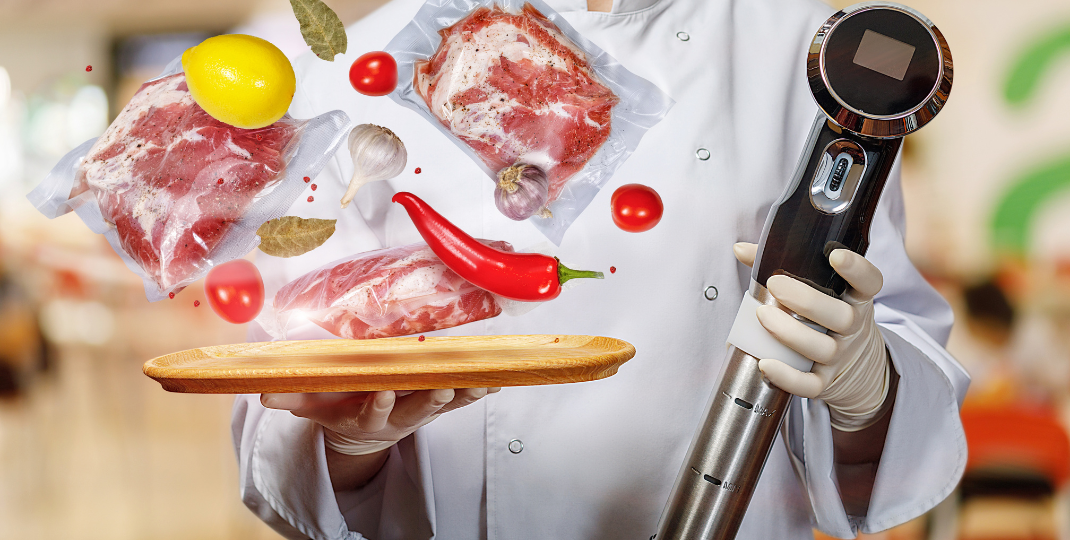Cultured meat, also known as lab-grown or cell-based meat, is a revolutionary innovation in the food industry that aims to provide a sustainable and ethical alternative to traditional animal farming. Unlike conventional meat production, which involves raising and slaughtering animals, cultured meat is produced by isolating animal cells and allowing them to multiply and differentiate into muscle tissue. This process typically involves taking a small sample of animal cells, culturing them in a nutrient-rich medium, and providing the necessary conditions for their growth. As the cells divide and grow, they form muscle fibers that can be harvested, processed, and eventually transformed into various meat products. By offering a way to produce meat without the need for animal slaughter and the associated environmental degradation, cultured meat offers a promising solution to meet the growing global demand for protein while mitigating the negative impacts of animal agriculture.

What are the costs associated with producing cultured meat?
The costs associated with producing cultured meat include the initial investment in research and development, the cost of sourcing and maintaining animal cells for culturing, the expenses for nutrient-rich media to support cell growth, the energy required for cell cultivation, the equipment and infrastructure for tissue engineering and bioreactors, and the costs of scaling up production. Additionally, the regulatory compliance and safety testing processes, as well as marketing and distribution expenses, contribute to the overall costs of producing cultured meat. However, as technology advances and economies of scale are achieved, it is expected that the costs will gradually decrease, making cultured meat more economically viable and accessible.

How does the production process of cultured meat compare to traditional meat production in terms of expenses?
The production process of cultured meat typically incurs higher expenses compared to traditional meat production. Cultured meat involves advanced scientific techniques such as tissue engineering and cell culture, which require specialized equipment, research, and development costs. The initial investment for setting up a laboratory for cultured meat can be substantial. However, as the technology continues to develop and scale up, it is expected that the cost of production will decrease, making cultured meat more economically viable in the long run. Additionally, traditional meat production also faces its own set of expenses such as animal feed, land use, water consumption, and environmental impacts, which may be reduced or eliminated by the cultured meat production process.
Are there any regulatory hurdles that may affect the production and distribution of cultured meat?
Yes, there are several regulatory hurdles that may affect the production and distribution of cultured meat. Firstly, the approval process for bringing cultured meat products to market may differ across countries and regions, requiring companies to navigate complex and potentially lengthy regulatory pathways. Additionally, existing food safety regulations may need to be adapted or updated to address the unique characteristics and production methods of cultured meat. Furthermore, there may be labeling requirements and consumer acceptance issues that need to be addressed to ensure transparency and trust in the new product category. Overall, regulatory challenges must be resolved to establish a clear framework for the production, distribution, and commercialization of cultured meat.
What is the expected price point for cultured meat products in comparison to conventional meat?
The expected price point for cultured meat products is initially higher than conventional meat due to the current limitations and high production costs associated with the technology. However, as the industry scales up and advances in efficiency are made, it is anticipated that the price of cultured meat will gradually decrease and eventually become cost-competitive with or even cheaper than conventional meat.
How long will it take for the production of cultured meat to become commercially viable on a large scale?

The timeline for the production of cultured meat to become commercially viable on a large scale is uncertain and depends on various factors. Currently, the cost of producing cultured meat is high, but with advancements in technology and scaling up of production processes, it is expected to decrease. Additionally, regulatory approval, consumer acceptance, and infrastructure development also play crucial roles in determining the commercial viability of cultured meat. While some estimates suggest it could take around 5-10 years, others believe it may take longer. Overall, it is challenging to provide a definitive timeline, but significant progress is being made towards making cultured meat a commercially viable option in the future.

Are there any potential financial risks or uncertainties associated with investing in cultured meat technology?
There are potential financial risks and uncertainties associated with investing in cultured meat technology. One major risk is the high upfront capital required for research, development, and scaling up production. The success of this technology is also contingent on regulatory approvals and consumer acceptance, which can pose uncertainties. Additionally, the cost-effectiveness and commercial viability of cultured meat compared to conventional meat production remain uncertain, which could impact investment returns. Overall, while cultured meat holds promise, investors should carefully assess these risks before committing their funds.
Will the production of cultured meat require significant capital investment and if so, what are the funding sources available?
The production of cultured meat is expected to require significant capital investment due to the complex and resource-intensive nature of the process. Cultured meat companies require funding for research and development, scaling up production facilities, and marketing efforts. Funding sources available for cultured meat include venture capital firms, government grants and subsidies, corporate partnerships, crowdfunding platforms, and philanthropic organizations that are interested in supporting sustainable and alternative food solutions.

Are there any potential economic benefits or drawbacks to the widespread adoption of cultured meat?

The widespread adoption of cultured meat holds potential economic benefits and drawbacks. On the positive side, it can lead to increased efficiency in food production as it requires fewer resources such as land, water, and feed compared to traditional livestock farming. It can also reduce the environmental impact associated with animal agriculture, potentially mitigating climate change. Additionally, it can create new job opportunities in research, development, and manufacturing of cultured cultured meat how is it made meat products. However, there may be initial high costs of production and scalability challenges that might limit its affordability and accessibility for consumers. The shift from traditional animal farming practices can also disrupt existing industries and livelihoods, leading to potential economic drawbacks. Overall, the long-term economic benefits or drawbacks will depend on various factors including consumer acceptance, technological advancements, and regulatory frameworks.
The Revolution of Cultured Meat: Exploring the Revolutionary Process of Manufacturing
In conclusion, cultured meat represents a promising solution to address the environmental, ethical, and health concerns associated with traditional animal agriculture. The process of creating cultured meat involves obtaining a small sample of animal cells, which are then nurtured and multiplied in a lab environment using various growth factors and nutrients. These cells eventually develop into muscle tissue, which can be harvested and processed into a wide range of meat products. By eliminating the need for large-scale animal farming, cultured meat production significantly reduces greenhouse gas emissions, land use, and animal suffering. Additionally, it offers the potential for personalized nutrition, reduced use of antibiotics, and improved food safety. Although challenges remain in terms of scalability and cost-effectiveness, continued research and investment in cultured meat technology hold immense promise for a sustainable and humane future of meat production.
